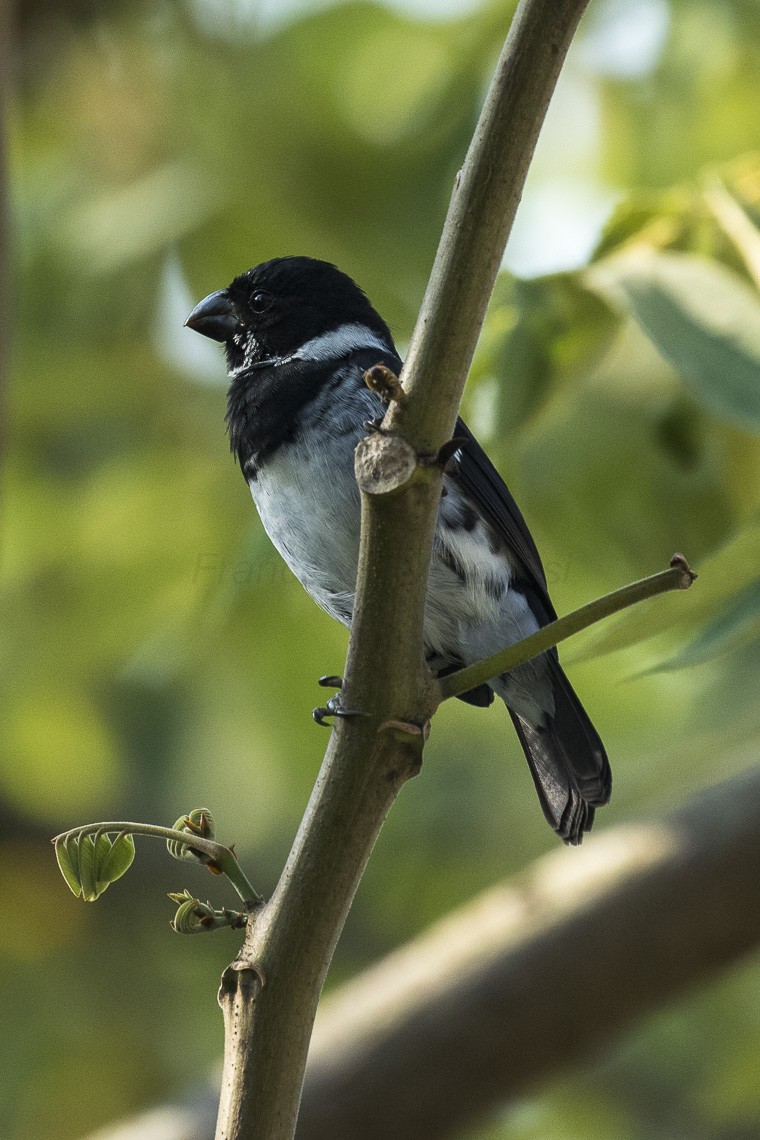Variable Seedeater
A species of Typical Seedeaters and Seed Finches Scientific name : Sporophila corvina Genus : Typical Seedeaters and Seed Finches
Variable Seedeater, A species of Typical Seedeaters and Seed Finches
Botanical name: Sporophila corvina
Genus: Typical Seedeaters and Seed Finches
Content
Description General Info
 Photo By Francesco Veronesi , used under CC-BY-SA-2.0 /Cropped and compressed from original
Photo By Francesco Veronesi , used under CC-BY-SA-2.0 /Cropped and compressed from original Description
The variable seedeater is a small, robust bird with a black conical bill. It is 10.5 cm (4.1 in) long and weighs 11 g (0.39 oz). There are four subspecies, which differ primarily in the plumage of the male: S. c. corvina – (P.L. Sclater, 1860): (nominate), found from southern Mexico and along the Caribbean slope from Belize south to Panama. Adult males are entirely black apart from a small white wing-speculum and white wing linings. S. c. hoffmannii – Cabanis, 1861: found on the Pacific slope of Costa Rica and Panama. Males resemble males S. c. corvina, but with white half-collar, rump and belly (the rump often intermixed with grey and the flanks retain some black mottling or barring). S. c. hicksii – (Lawrence, 1865): found in eastern Panama and adjacent north-western Colombia. Males resemble S. c. hoffmannii, but, except for a small black chin and/or malar, the entire throat is white. S. c. ophthalmica – (P.L. Sclater, 1860): found in southwestern Colombia, western Ecuador, and far north-western Peru. Males are very similar to males of S. c. hicksii, but black malar is very fine or lacking, rump purer white, and shows purer white flanks with little or no black mottling/barring. Previously, additional subspecies have been recognized for the various hybrid populations found where the above-mentioned subspecies meet (see Taxonomy). Females are olive-brown above, paler below, and have white wing linings like the male. The racial differences in the female plumages are minor, with S. c. hoffmannii, S. c. hicksii and S. c. ophthalmica generally being paler and less brown than S. c. corvina, and often with a faint yellow tinge below. Juveniles are like the adult female of their subspecies. Males may not acquire the full adult plumage in their first year, and may breed whilst still showing some immature features in their appearance. A hypermelanic male was reported from Reserva Buenaventura in El Oro Province, Ecuador, in 2005. The bird had increased phaeomelanin; its white areas — except those of the wings — were bright tawny chestnut. A similar bird was collected along the "Pipeline Road" near Gamboa, Panama, in 1963. Such individuals seem to provide a glimpse at the circumstances of speciation: in the genera Sporophila and Oryzoborus, several species exist which differ externally only by one having white areas, the other being hypermelanic just as the two variable seedeaters mentioned here. Of course, there must be some factor maintaining reproductive isolation, but the plumage differences between such seedeater species pairs probably had their origin in such a mutation becoming fixed in a founder population due to genetic drift. 
Size
12 cm
Nest Placement
Shrub
Feeding Habits
Variable Seedeater, primarily feeds on grass seeds and berries, supplementing its diet occasionally with insects. It employs ground foraging techniques, revealing a varied diet with unique preferences for certain seeds.
Habitat
The variable Seedeater is often found in lowland and foothill regions, generally at elevations up to 1,500 meters. Preferring semi-open habitats, this species primarily occupies areas such as forest edges, thickets, scrublands, gardens, and pastures. It also adapts well to human-altered landscapes including weedy fields, roadsides, and grasslands. Tall grass, particularly elephant grass, serves as a common roosting site for the variable Seedeater. It is distributed broadly across appropriate habitats in tropical regions.
Dite type
Granivorous
General Info
Feeding Habits
Bird food type
Species Status
Not globally threatened.